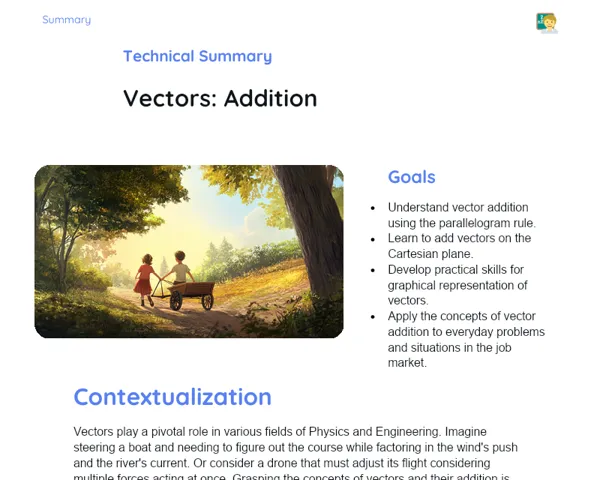Goals
1. Understand the concept of inertia.
2. Comprehend that a body at rest or moving at a steady speed has zero acceleration.
3. Recognize that the total forces on a body in balance sum up to zero.
4. Apply concepts of inertia to everyday situations.
5. Relate Newton's 1st Law to scenarios in the job market.
Contextualization
Imagine you're travelling in a local bus that suddenly applies brakes. What happens to you? Your body continues to move forward even as the bus comes to a halt. This practical example demonstrates Newton's 1st Law, often known as the Law of Inertia. It states that an object will remain in its state of rest or uniform motion unless acted upon by an external force. This principle is foundational for understanding how forces and motion work in our everyday lives in India.
Subject Relevance
To Remember!
Concept of Inertia
Inertia is the tendency of an object to resist changes in its motion. This means that a stationary object stays still, while a moving object continues at the same speed and in the same direction unless an external force acts on it.
-
Inertia is the resistance to changes in motion.
-
Objects at rest will stay at rest without external forces.
-
Objects in motion will keep moving without external forces.
Newton's First Law
Newton's First Law, also referred to as the Law of Inertia, asserts that an object will remain at rest or will keep moving in a straight line at a constant speed unless an unbalanced external force acts on it. This law describes the behavior of objects not undergoing acceleration.
-
An object at rest will remain at rest.
-
An object in uniform motion will continue in motion.
-
A shift in the state of motion occurs only with an external force.
Equilibrium of Forces
The equilibrium of forces occurs when all the forces acting on an object balance out, leading to a net force of zero. In this state, a stationary body will stay stationary, and a moving body will keep moving at a constant speed.
-
Balanced forces result in a net force of zero.
-
An object in equilibrium does not accelerate.
-
Equilibrium can exist both at rest and in uniform motion.
Practical Applications
-
In the automotive industry, understanding inertia is fundamental for designing safety systems like seat belts and airbags, which prevent serious injuries during accidents.
-
In aviation, controlling inertia is crucial for maintaining stability and maneuverability of planes and satellites, ensuring safe and precise missions.
-
In sports like cricket or football, knowing about inertia helps players anticipate and control the movement of the ball, enhancing the accuracy of passes and shots.
Key Terms
-
Inertia: The property of resisting changes in motion.
-
Newton's First Law: The principle that a body remains at rest or in uniform motion unless acted upon by an external force.
-
Equilibrium of Forces: A condition where all acting forces on an object cancel out, resulting in a net force of zero.
Questions for Reflections
-
How has inertia influenced the design of modern vehicles in India?
-
In what ways can understanding Newton's first law lead to improvements in safety systems for airplanes?
-
Consider a daily activity where inertia plays a significant role. How can you use this understanding to enhance your execution of that activity?
Practical Challenge: Testing Inertia
Let’s apply what we’ve learned about Newton's 1st Law by conducting a simple experiment to observe inertia in action.
Instructions
-
Take a small ball (a ping-pong ball or a crumpled piece of paper will do).
-
Place the ball on a piece of cardboard and hold the cardboard flat.
-
Let the ball rest on the cardboard and notice that it remains still.
-
Now, swiftly move the cardboard forward and stop suddenly. Observe the ball's reaction.
-
Document your observations regarding how inertia affected the ball's movement.
-
Explain the ball's behavior based on Newton's 1st Law.



